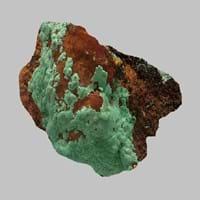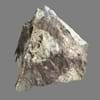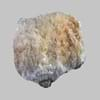Definition
It is a metamorphic magnesium rich rock because it is composed of the mineral talc
Gossan is intensely oxidized, weathered or decomposed rock, usually the upper and exposed part of an ore deposit or mineral vein.
Discoverer
Unknown
Cornish Gossen
Etymology
From 17th century, because of its greasy feel and use like a soap
From Cornish gossen from gos, blood from Old Cornish guit
Class
Metamorphic Rocks
Metamorphic Rocks
Sub-Class
Durable Rock, Soft Rock
Durable Rock, Medium Hardness Rock
Group
Not Applicable
Not Applicable
Other Categories
Fine Grained Rock, Opaque Rock
Fine Grained Rock, Medium Grained Rock, Opaque Rock
Texture
Polished
Rough, Sandy
Color
Black, Black to Grey, Green, Grey
Brown, Brown- Black, Gold, Green, Rust
Durability
Durable
Durable
Appearance
Dull, Banded and Foilated
Dull and Banded
Interior Uses
Bathrooms, Decorative Aggregates, Homes, Interior Decoration
Countertops, Decorative Aggregates, Interior Decoration
Exterior Uses
As Facing Stone, Garden Decoration
As Building Stone, As Facing Stone, Paving Stone, Garden Decoration, Office Buildings
Other Architectural Uses
Curbing
Curbing
Construction Industry
Manufacture of Magnesium and Dolomite Refractories
As Dimension Stone, Cement Manufacture, Construction Aggregate, for Road Aggregate
Medical Industry
Taken as a Supplement for Calcium or Magnesium
Not Yet Used
Antiquity Uses
Artifacts, Jewellery, Monuments, Sculpture
Artifacts
Commercial Uses
Cemetery Markers, Creating Artwork, Gemstone, Jewelry, Manufacture of Soap, Solvents, Dyes, Plastics and Fibres, Production of Lime, Source of Magnesia (MgO)
Cemetery Markers, Commemorative Tablets, Gemstone
Types
Not Available
Translocated gossan and Leakage gossan
Features
Host Rock for Lead
Clasts are smooth to touch, Easily splits into thin plates
Archaeological Significance
Monuments
Used
Not Yet Used
Famous Monuments
Christ the Redeemer in Rio de Janeiro, Stonehenge in English county of Wiltshire
Not Applicable
Sculpture
Used
Not Yet Used
Famous Sculptures
Data Not Available
Not Applicable
Figurines
Used
Not Yet Used
Formation
Soapstone is a talc-schist, which is a type of metamorphic rock and it is largely composed of the mineral talc and is thus rich inmagnesium.
Earth movements can cause rocks to be either deeply buried or squeezed and hence the rocks are heated and put under great pressure.
Mineral Content
Albite, Apatite, Biotite, Calcite, Carbonate, Clay Minerals, Hornblende, Ilmenite, Micas, Plagioclase, Pyroxene, Quartz
Apatite, Augite, Biotite, Bronzite, Calcite, Chert, Epidote, Feldspar, Hornblende, Micas, Plagioclase, Pyroxene, Quartz, Sulfides, Zircon
Compound Content
CaO, Mg, MgO
Aluminium Oxide, CaO, Fe, FeO, Silicon Dioxide, Sulphur
Types of Metamorphism
Burial Metamorphism, Cataclastic Metamorphism, Contact Metamorphism, Hydrothermal Metamorphism, Impact Metamorphism, Regional Metamorphism
Not Applicable
Types of Weathering
Not Applicable
Not Applicable
Types of Erosion
Not Applicable
Chemical Erosion, Sea Erosion, Wind Erosion
Grain Size
Fine Grained
Fine to Medium Grained
Fracture
Conchoidal
Conchoidal
Streak
Black
White to Grey
Porosity
Less Porous
Highly Porous
Compressive Strength
Not Available
Cleavage
Perfect
Not Available
Toughness
1
Not Available
Specific Gravity
2.86
2.0
Transparency
Opaque
Opaque
Density
2.8-2.9 g/cm3
Not Available
Resistance
Heat Resistant, Pressure Resistant
Heat Resistant, Impact Resistant, Pressure Resistant
Deposits in Eastern Continents
Asia
China, India, Indonesia, Japan, North Korea, Russia, Saudi Arabia, Singapore, South Korea, Sri Lanka, Tajikistan, Thailand
China, India, Indonesia, Russia, Singapore, South Korea
Africa
Egypt, Ethiopia, Ghana, South Africa, Western Africa
Cape Verde, Ethiopia, Ghana, South Africa, Western Africa
Europe
Austria, England, Finland, France, Germany, Greece, Spain, Sweden, Switzerland, United Kingdom
Albania, France, Germany, Great Britain, United Kingdom
Others
Not Yet Found
Not Yet Found
Deposits in Western Continents
North America
Canada, USA
Canada, USA
South America
Colombia
Brazil, Colombia, Ecuador
Deposits in Oceania Continent
Australia
Central Australia, New Zealand, Queensland
New South Wales, South Australia, Western Australia
All about Soapstone and Gossan Properties
Know all about Soapstone and Gossan properties here. All properties of rocks are important as they define the type of rock and its application. Soapstone and Gossan belong to Metamorphic Rocks.Texture of Soapstone is Polished whereas that of Gossan is Rough, Sandy. Soapstone appears Dull, Banded and Foilated and Gossan appears Dull and Banded. The luster of Soapstone is greasy while that of Gossan is metallic. Soapstone is available in black, black to grey, green, grey colors whereas Gossan is available in brown, brown- black, gold, green, rust colors. The commercial uses of Soapstone are cemetery markers, creating artwork, gemstone, jewelry, manufacture of soap, solvents, dyes, plastics and fibres, production of lime, source of magnesia (mgo) and that of Gossan are cemetery markers, commemorative tablets, gemstone.










